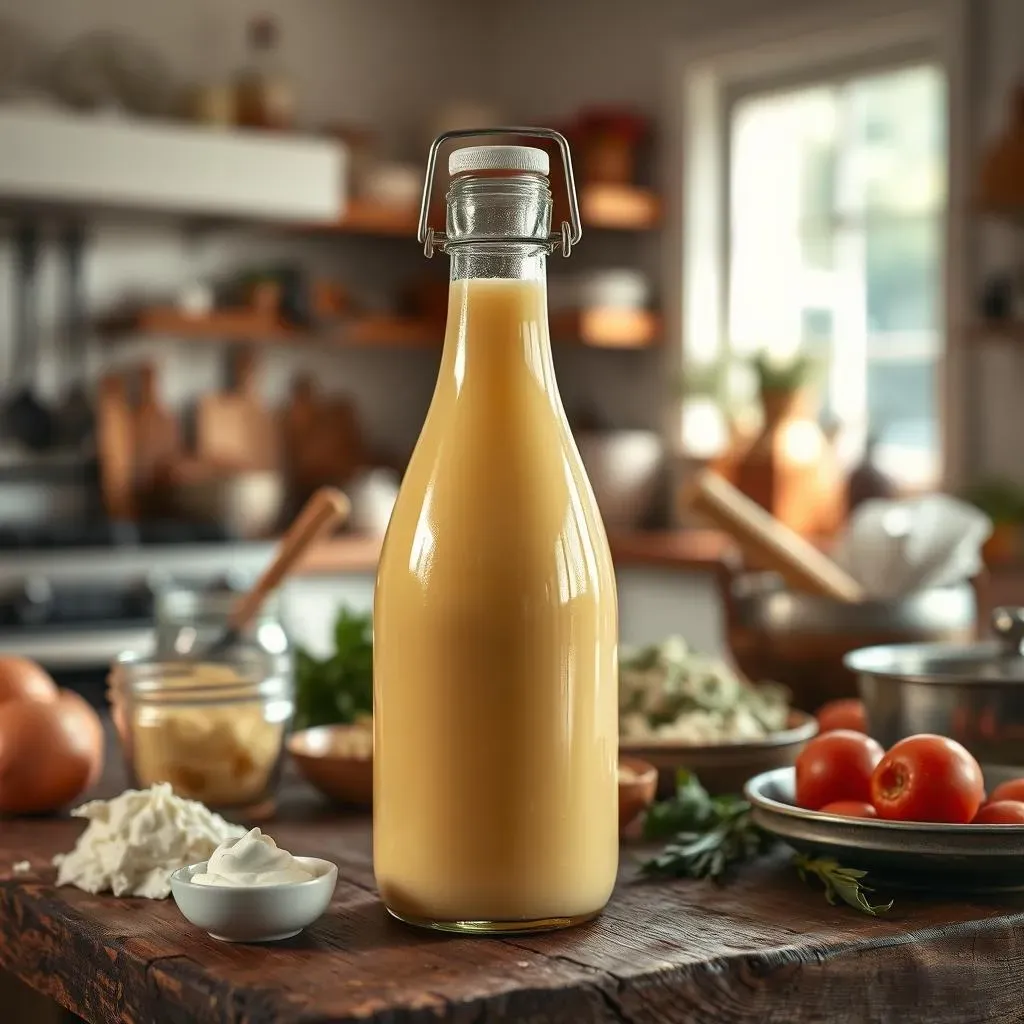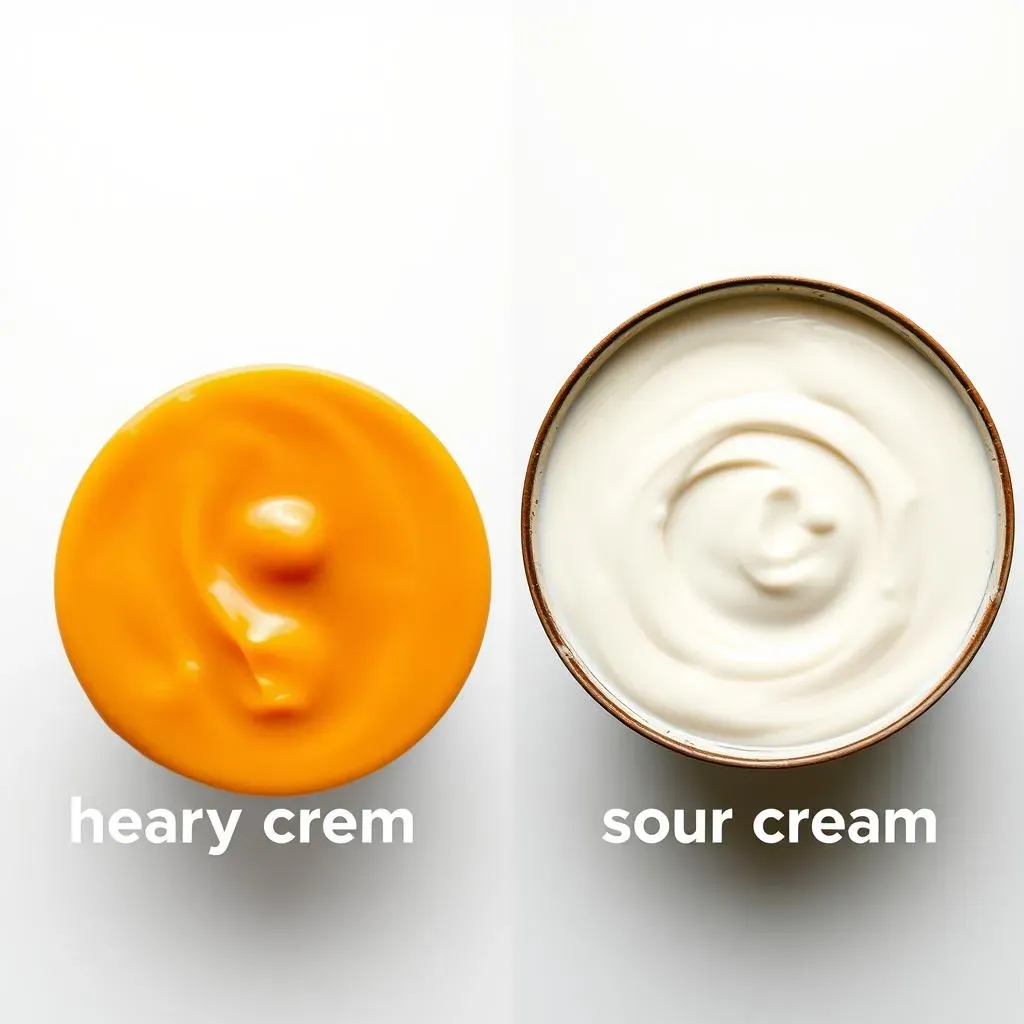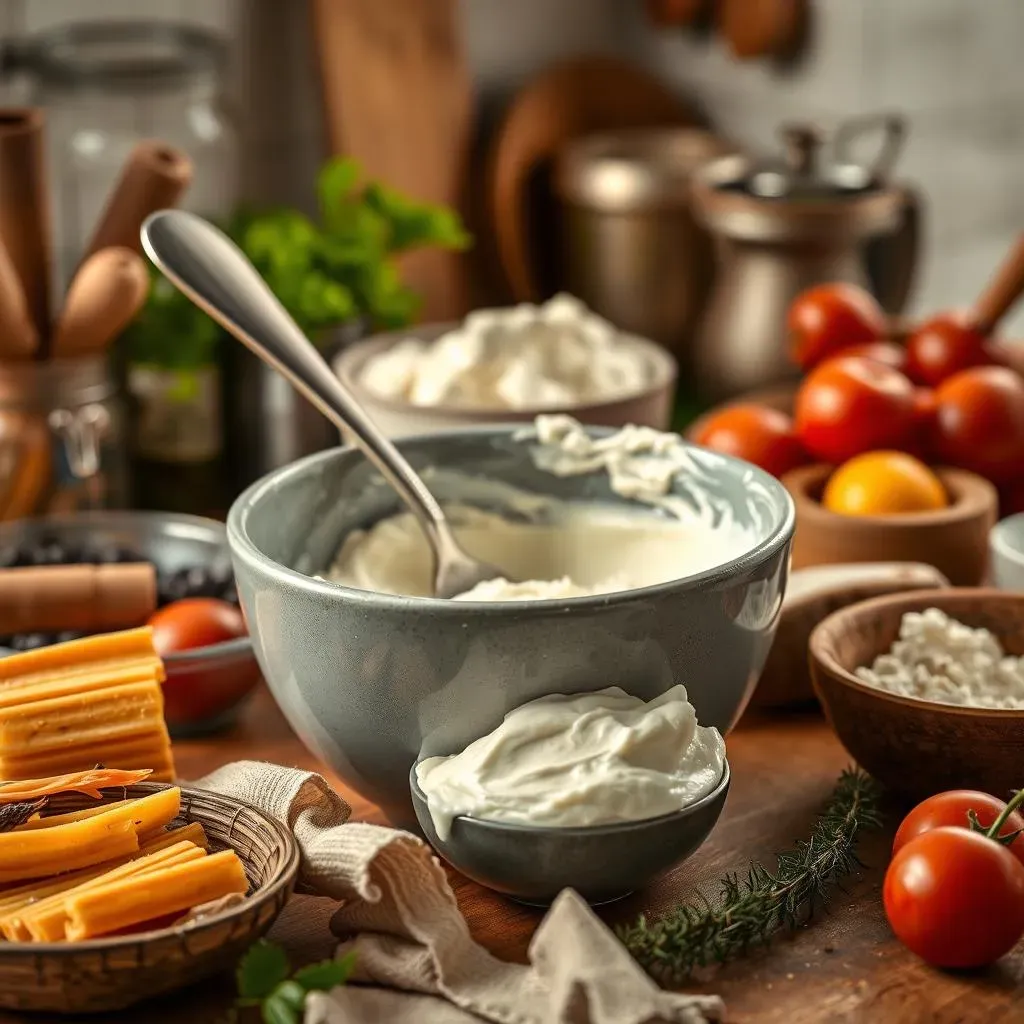Table of Contents
Ever found yourself in the middle of a recipe, only to realize you're out of heavy cream? It's a kitchen crisis we've all faced. But before you abandon your culinary dreams, let's talk about a tangy twist: sour cream. The question "is sour cream a good substitute for heavy cream?" pops up in kitchens everywhere, and the answer, like most things in cooking, isn't a simple yes or no. It depends on what you’re making and what flavors you’re aiming for. In this article, we're going to explore the differences between these two dairy delights. We'll also uncover when sour cream can step in as a hero and when it's best to stick with the real deal. Get ready to learn about the science of substitutions and how to make your dishes sing, even when you’re missing a key ingredient. We'll cover when sour cream is a suitable stand-in, the best ways to use it, and some helpful tips to avoid any kitchen mishaps. So, grab your apron, and let's get cooking!
Understanding Heavy Cream and Its Role in Recipes

Understanding Heavy Cream and Its Role in Recipes
Okay, so let's talk heavy cream. It's not just any old dairy product; it's the superstar of richness in the kitchen. Think of it as the velvet robe of the culinary world. It's got a high fat content, usually around 36% or more, which is what gives it that luxurious texture and ability to thicken sauces, make them creamy and smooth. This high fat also gives it a very unique ability to whip up into fluffy peaks, making it the go-to for desserts like whipped cream and mousse. It's also essential in many savory dishes, adding that extra depth and body to things like creamy soups, pasta sauces and decadent casseroles. Without it, many of our favorite recipes would simply fall flat, lacking that signature richness we know and love. Heavy cream is basically the secret weapon that can turn a decent dish into a truly amazing one.
When is Sour Cream a Good Substitute for Heavy Cream?

When is Sour Cream a Good Substitute for Heavy Cream?
Okay, so you're staring into your fridge, heavy cream-less, and a tub of sour cream is winking at you. The big question: can it actually work? Well, it's not a straight swap in every scenario. Sour cream, unlike its richer cousin, has a tangy flavor and a lower fat content (usually around 20%). This means it won't whip up into beautiful peaks, and it won't create the same level of richness in sauces. But, it does bring its own unique qualities to the table. It is great in recipes where you want a bit of a zip, like in some cakes, muffins, or even in dips and dressings. Think of sour cream as the cool, slightly rebellious cousin of heavy cream. It's not trying to be the same, it just has its own strengths.
For example, imagine you're making a batch of scones. If you don’t have heavy cream, sour cream can add moisture and a nice subtle tang, giving them a little extra flavor. Or, picture a creamy pasta dish. If you're okay with a slightly thinner sauce and a bit of that sour note, sour cream can work in a pinch. It's all about understanding that it's not a perfect match, but it's a good substitute when you're in a bind. You just need to know when to use it and when to maybe consider a different option.
Use Case | Heavy Cream | Sour Cream |
|---|---|---|
Whipped Topping | Excellent | Not Suitable |
Rich Sauces | Ideal | Can work, but thinner |
Baking | Good for richness | Good for moisture and tang |
Dips and Dressings | Good, but can be too rich | Excellent, adds a nice tang |
How to Use Sour Cream as a Heavy Cream Substitute: Tips and Tricks

How to Use Sour Cream as a Heavy Cream Substitute: Tips and Tricks
Start Small and Adjust
Okay, so you're ready to give sour cream a try. First things first: don't go overboard. When you're swapping sour cream for heavy cream, start by using a little less than what the recipe calls for. For example, if the recipe asks for one cup of heavy cream, try using about ¾ cup of sour cream. You can always add more if you need to, but it's much harder to take it out. Remember, sour cream has a tang, and you don’t want it to overpower the dish. Taste as you go and adjust accordingly. It's all about finding that perfect balance, like a scientist in the kitchen, but with more delicious results.
Mind the Heat
Here's a crucial tip: sour cream is a bit of a diva when it comes to heat. It can curdle if you get it too hot, and nobody wants a grainy sauce. The best way to avoid this is to add it towards the end of the cooking process, just like you would with heavy cream. Don't dump it in at the beginning and let it simmer away. Instead, gently stir it in at the last minute, after you've taken the dish off the direct heat. This will help keep it smooth and creamy. Think of it like adding a delicate finishing touch, not a main ingredient that can withstand high heat. It is all about patience and timing, my friend.
Problem | Solution |
|---|---|
Curdling in Heat | Add at the end, off direct heat |
Overpowering Tang | Start with less, taste and adjust |
Baking with Sour Cream
Baking is a bit of a different ball game. Sour cream can be a star in some baked goods, adding moisture and that lovely tang. However, remember that it won’t create the same rise or richness as heavy cream. If you're using sour cream in place of heavy cream in a cake or muffin recipe, you might need to tweak other liquids. For example, if the recipe is already quite moist, you might want to reduce the amount of milk or water slightly to compensate. It's all about finding that balance of moisture and flavor. And if you're making a cheesecake, high-fat sour cream is your friend, as it can give it a richer taste and texture. So, experiment and see what works best for you. It's a learning process, after all, and sometimes, the best discoveries come from a little kitchen experimentation.